jimvonbaden
Kool Aid Dispenser!
Since I am often asked to help people change their tires, I thought it would be cool to make up a little tutorial about how it is done. It wont substitute for direct experience, but it should give you a start.
I will list torque values where appropriate, as well as any hints that might help.
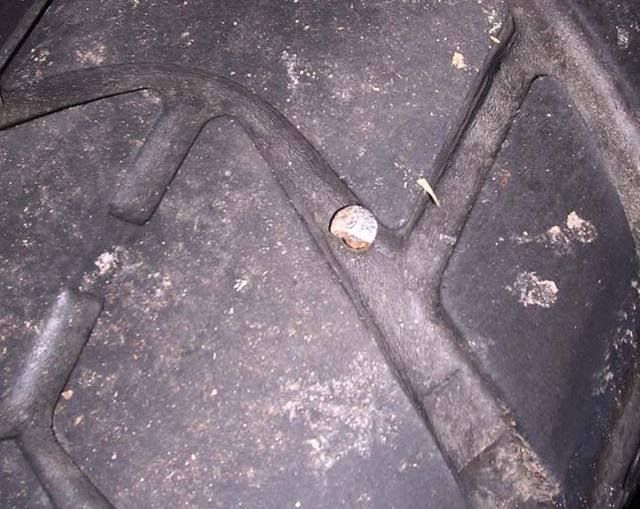
This tire was about worn out anyhow, but the nail in it made me do it sooner. See this thread on how to plug a tire.
If you plan on doing it yourself, it helps to have an assistant. Mine for the evening was my GF Tina. She is assisting by taking pictures! Notmally your assistant will help in a more direct way!
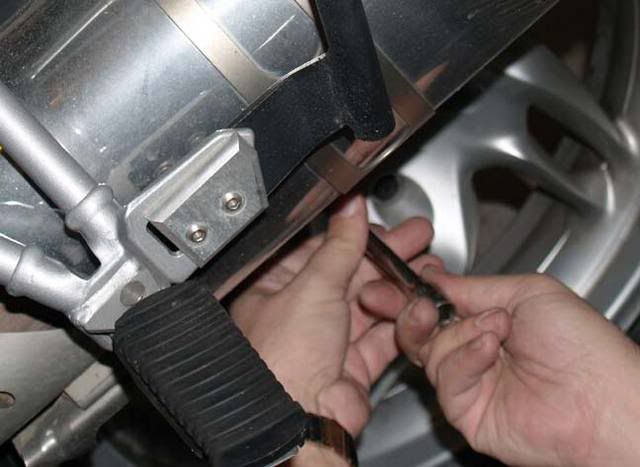
Bike on the centerstand, remove the lug bolts. On the 12GS/ST/RT it is a T-55 Torx socket. No need to remove the brake caliper on the 12 series, though some 1100/1150 R bikes and K bikes need the caliper removed as the rotor comes off with the wheel.
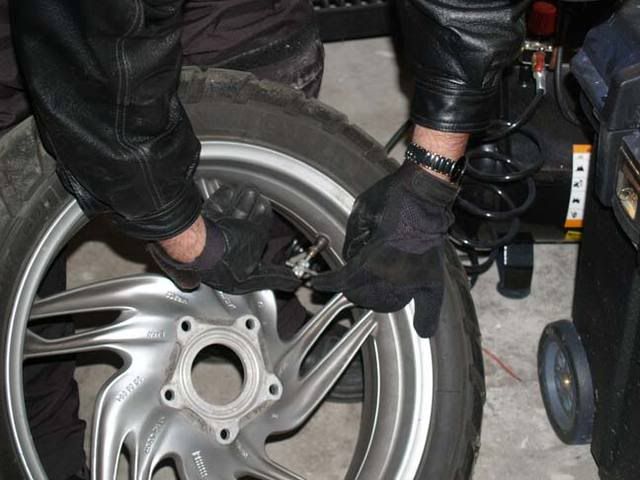
Once the wheel is off, remove the valve cap and valve core with the removal tool. I always have a couple spare valve cores in case one is bad.

Breaking the bead is made fairly easy with the HF tire changing tool with motorcycle adapter. I make sure not to let the edge of the tool touch the edge of the wheel. I am pretty good at avoiding scratches to the wheel, but it takes practice.
Once you have pushed the bead down off the wheel, you need to push it off all the way around by hand.
Flip the wheel over and do it again. Notice that I use a piece of thick vinyl under the wheel to protect it. I also make sure to not break the bead near the valve core with the machine. I am using the removal bar for leverage.
It probably looks harder than it is.
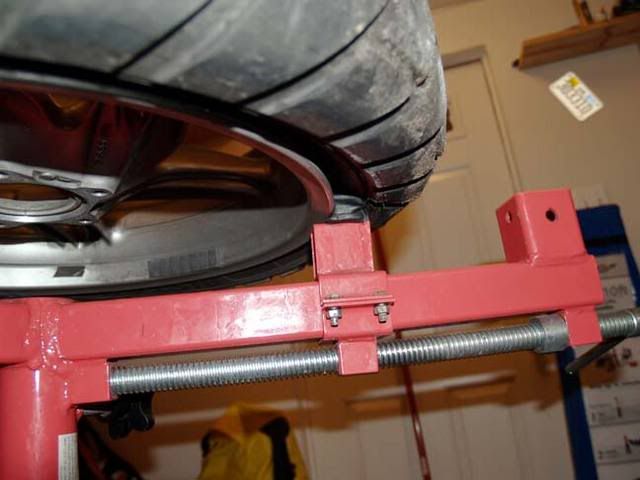
Then I mount the rim on the HF tire clamp. I make sure the clamps are in the right position to allow the center of the wheel to be centered. That way I can install the center levering bar.
DonÔÇÖt be afraid to pull it down snug, your wheel can take it. I also have nylon blocks, made by my friend Kermit, that protect the wheel. The HF clamps are painted metal, and will scratch the wheels. These nylon clamps also work better with GS wheels.
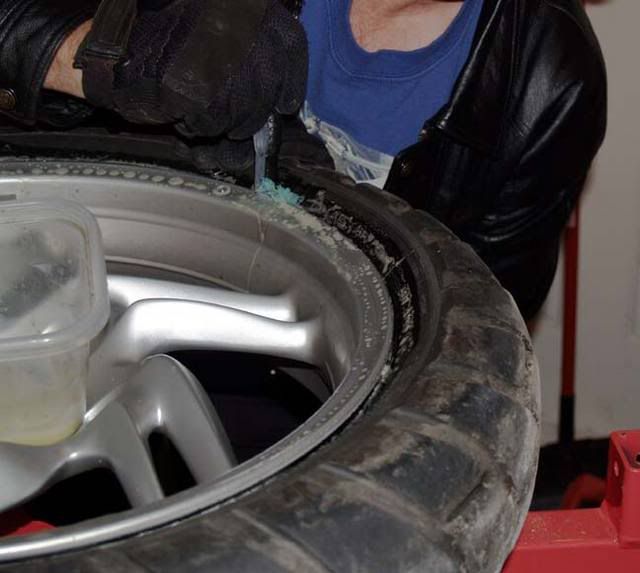
Using a lube, either special tire lube, or dishwashing liquid and soap, make sure you apply plenty to the tire bead, and rim.
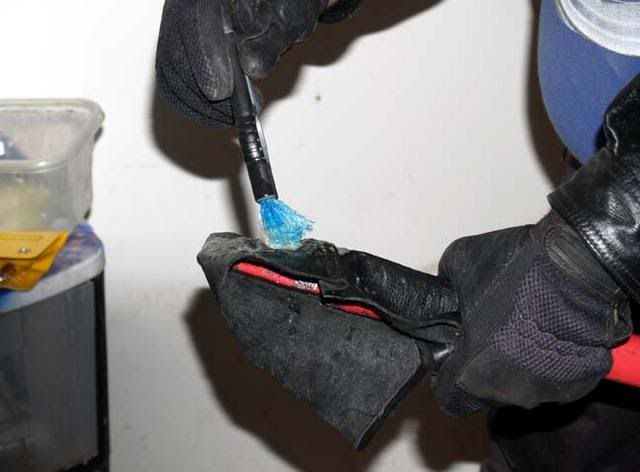
I also use a piece of leather over the end of the HF tire bar to protect the rim. I lube it lightly as well.
Note: There are a few good other bars out there with nylon ends, like the Nomar, but I find the HF init works fine, and came free.
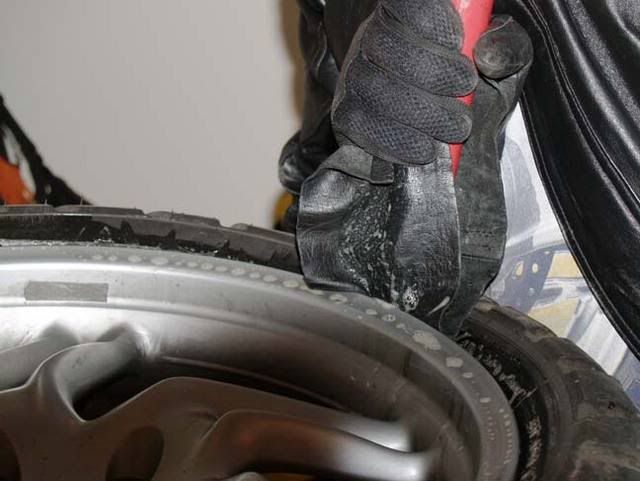
Insert the thin end of the bar in between the tire and rim.

Catch the lip of the bead on the tire and pull the bar over.
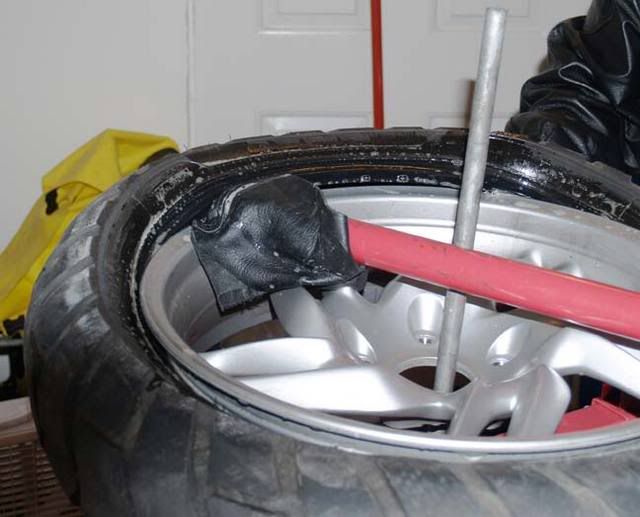
Hook the bar on the center levering bar and begin to pull. The bar will slide along removing the tire.
You may need to hold the tire to keep it from moving on the clamps, and you may need to lift up a little to make sure the tire doesnÔÇÖt slip back on.
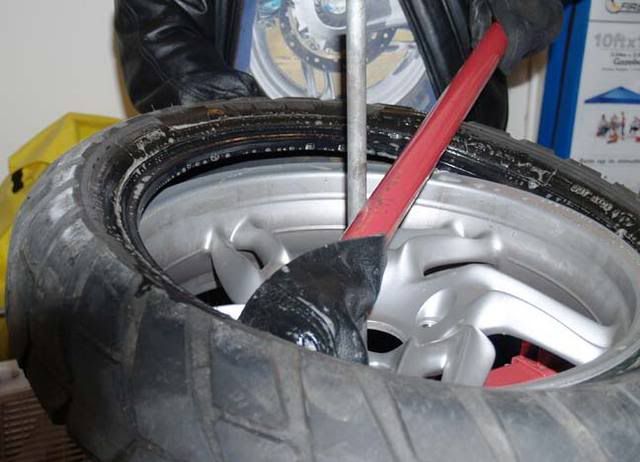
Pull it all the way around, or until the upper bead comes completely loose.

With the upper bead off, you can lift the tire and lube the lower bead.
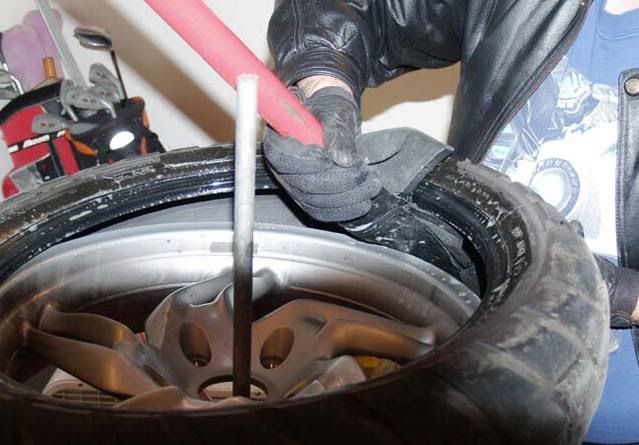
This is a little tricky, but not bad with a little practice. Next you lift the tire and insert the removal tool under the lower bead. Then twist the bar to lift the bead.
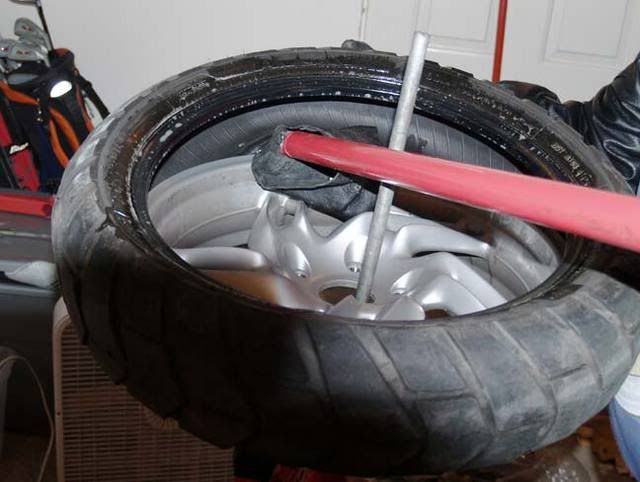
As before, you pull the lever around the bar while lifting on the tire.
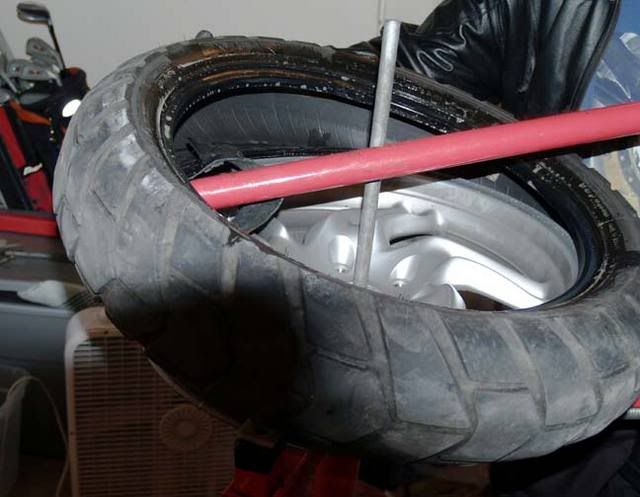
As you come around the bar, the tire will come completely free. But donÔÇÖt remove the tire yet. Let it rest on the rim and check the direction of the rotation.

It is a good idea to check the rotation, see arrow, then place the tire on the ground in the same orientation as it came off, just in case you forgot the direction.
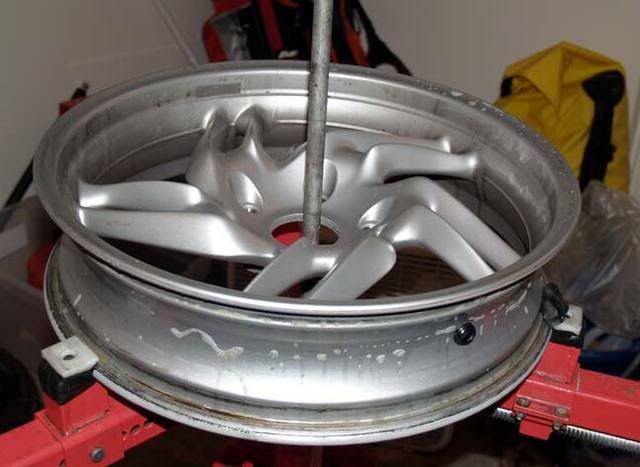
Here is the wheel on the stand. It is a food look at how it fits.
At this time it is a good idea to clean the inside of the rim, and make sure there is no damage, and no burrs on the rim.
Some people actually clean the wheel now as well!
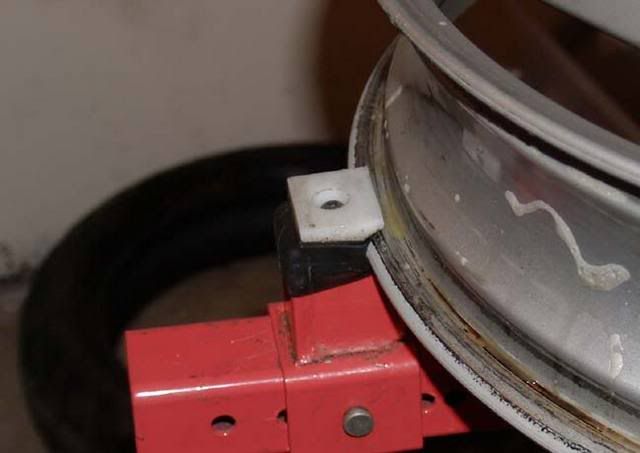
Here is a nice look at how KermitÔÇÖs rim protectors work on the HF unit. And no, he doesnÔÇÖt make them publicly. You can make your own from a 1ÔÇØ square block of nylon. We also add small sections of bicycle innertube to keep the rim from slipping.
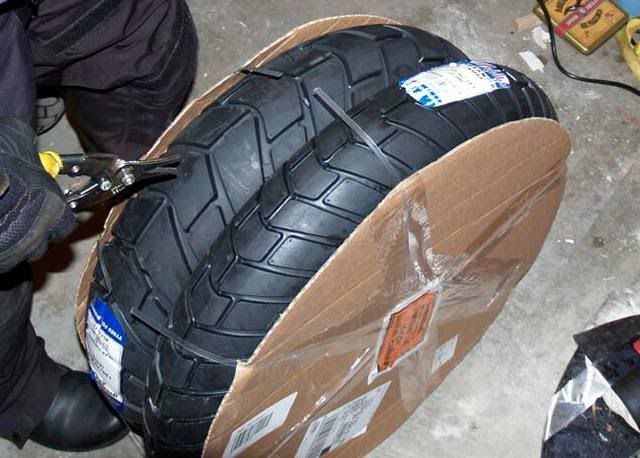
Clip the tires from the package, and ensure they are the correct size. (You should probably do this BEFORE removing your old tires and wheels.
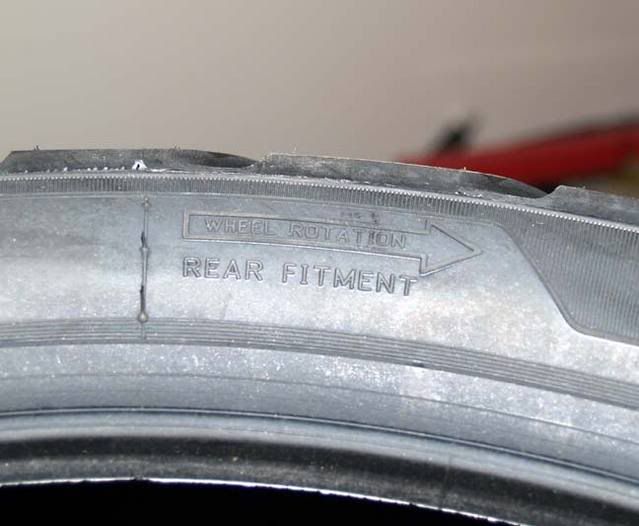
Check the rotation of the new tire. Make sure it is pointing in the same direction. Ignore the tread pattern unless you know that you want to put it on backwards (NOT recommended unless you KNOW what you are doing).
Continued...
I will list torque values where appropriate, as well as any hints that might help.

This tire was about worn out anyhow, but the nail in it made me do it sooner. See this thread on how to plug a tire.
If you plan on doing it yourself, it helps to have an assistant. Mine for the evening was my GF Tina. She is assisting by taking pictures! Notmally your assistant will help in a more direct way!

Bike on the centerstand, remove the lug bolts. On the 12GS/ST/RT it is a T-55 Torx socket. No need to remove the brake caliper on the 12 series, though some 1100/1150 R bikes and K bikes need the caliper removed as the rotor comes off with the wheel.

Once the wheel is off, remove the valve cap and valve core with the removal tool. I always have a couple spare valve cores in case one is bad.

Breaking the bead is made fairly easy with the HF tire changing tool with motorcycle adapter. I make sure not to let the edge of the tool touch the edge of the wheel. I am pretty good at avoiding scratches to the wheel, but it takes practice.
Once you have pushed the bead down off the wheel, you need to push it off all the way around by hand.
Flip the wheel over and do it again. Notice that I use a piece of thick vinyl under the wheel to protect it. I also make sure to not break the bead near the valve core with the machine. I am using the removal bar for leverage.
It probably looks harder than it is.

Then I mount the rim on the HF tire clamp. I make sure the clamps are in the right position to allow the center of the wheel to be centered. That way I can install the center levering bar.
DonÔÇÖt be afraid to pull it down snug, your wheel can take it. I also have nylon blocks, made by my friend Kermit, that protect the wheel. The HF clamps are painted metal, and will scratch the wheels. These nylon clamps also work better with GS wheels.

Using a lube, either special tire lube, or dishwashing liquid and soap, make sure you apply plenty to the tire bead, and rim.

I also use a piece of leather over the end of the HF tire bar to protect the rim. I lube it lightly as well.
Note: There are a few good other bars out there with nylon ends, like the Nomar, but I find the HF init works fine, and came free.

Insert the thin end of the bar in between the tire and rim.

Catch the lip of the bead on the tire and pull the bar over.

Hook the bar on the center levering bar and begin to pull. The bar will slide along removing the tire.
You may need to hold the tire to keep it from moving on the clamps, and you may need to lift up a little to make sure the tire doesnÔÇÖt slip back on.

Pull it all the way around, or until the upper bead comes completely loose.

With the upper bead off, you can lift the tire and lube the lower bead.

This is a little tricky, but not bad with a little practice. Next you lift the tire and insert the removal tool under the lower bead. Then twist the bar to lift the bead.

As before, you pull the lever around the bar while lifting on the tire.

As you come around the bar, the tire will come completely free. But donÔÇÖt remove the tire yet. Let it rest on the rim and check the direction of the rotation.

It is a good idea to check the rotation, see arrow, then place the tire on the ground in the same orientation as it came off, just in case you forgot the direction.

Here is the wheel on the stand. It is a food look at how it fits.
At this time it is a good idea to clean the inside of the rim, and make sure there is no damage, and no burrs on the rim.
Some people actually clean the wheel now as well!

Here is a nice look at how KermitÔÇÖs rim protectors work on the HF unit. And no, he doesnÔÇÖt make them publicly. You can make your own from a 1ÔÇØ square block of nylon. We also add small sections of bicycle innertube to keep the rim from slipping.

Clip the tires from the package, and ensure they are the correct size. (You should probably do this BEFORE removing your old tires and wheels.

Check the rotation of the new tire. Make sure it is pointing in the same direction. Ignore the tread pattern unless you know that you want to put it on backwards (NOT recommended unless you KNOW what you are doing).
Continued...

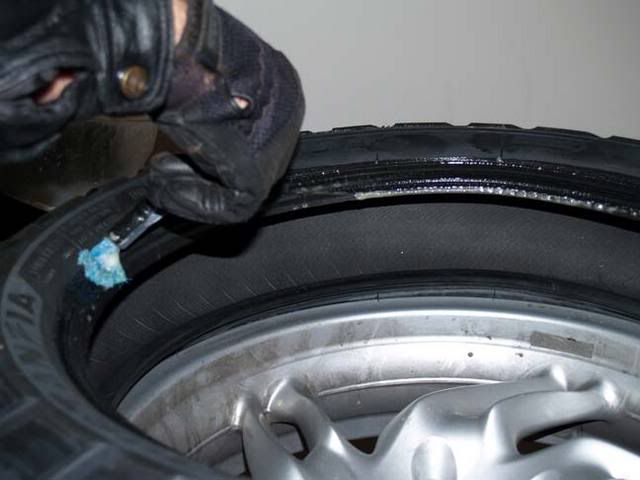
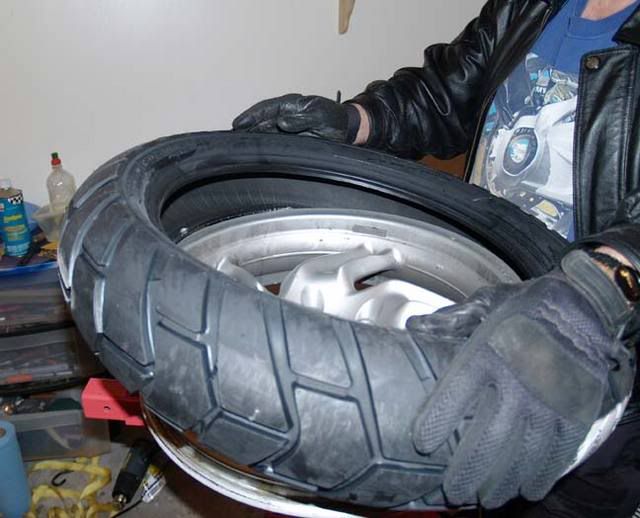
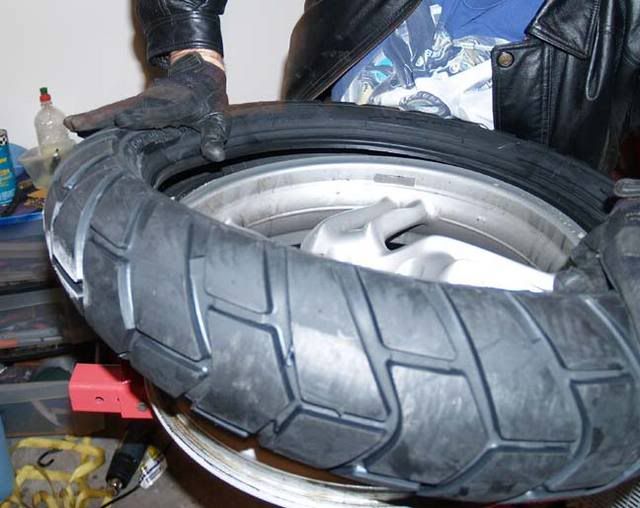
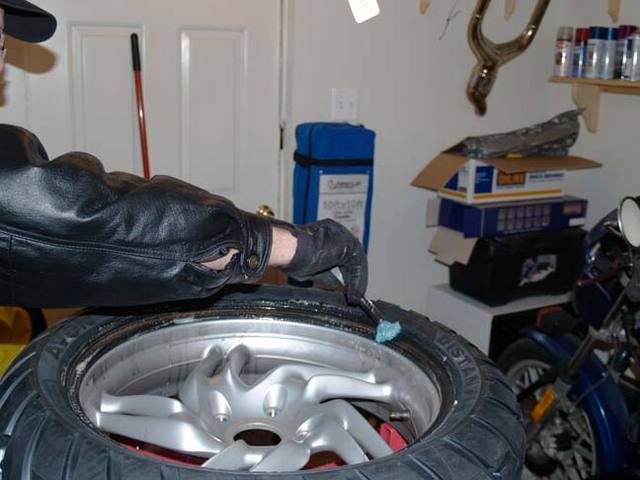
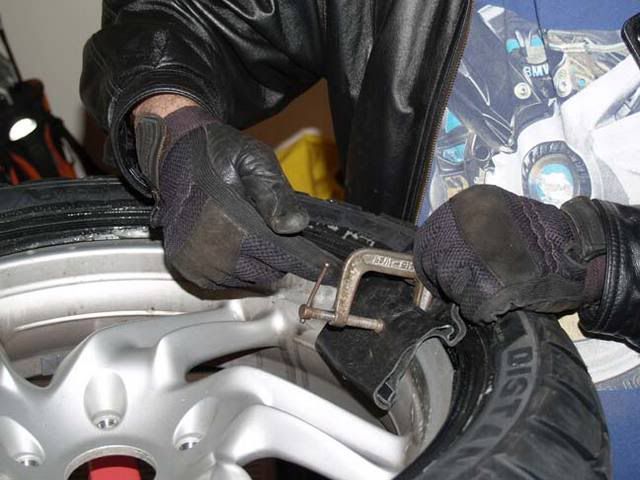
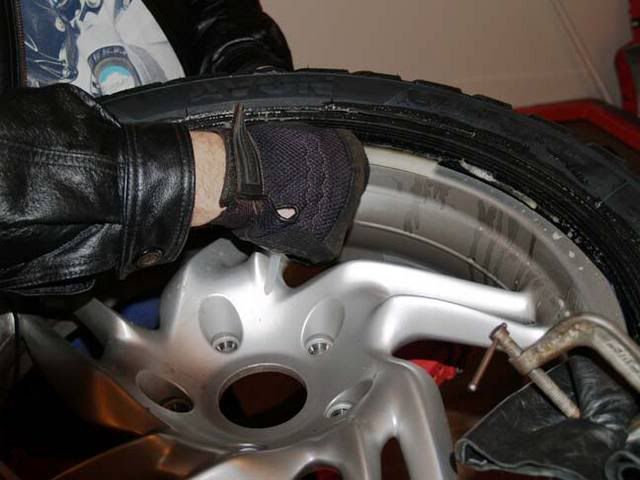
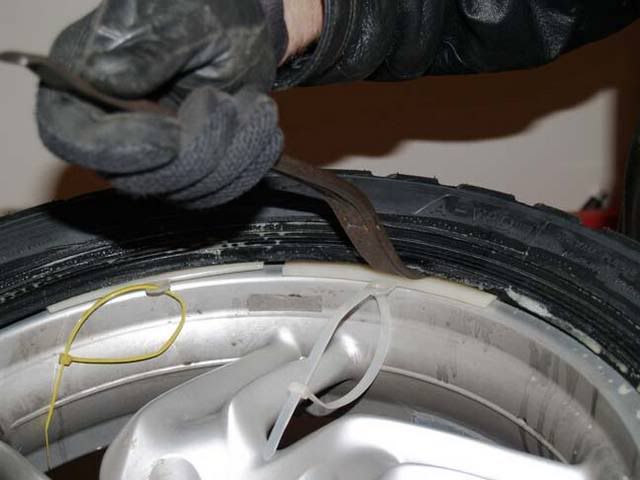
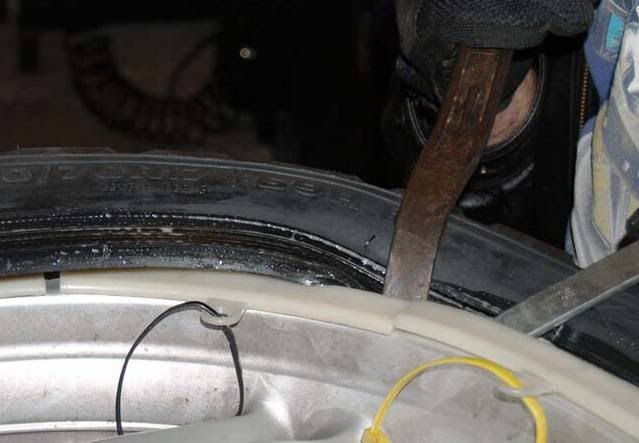
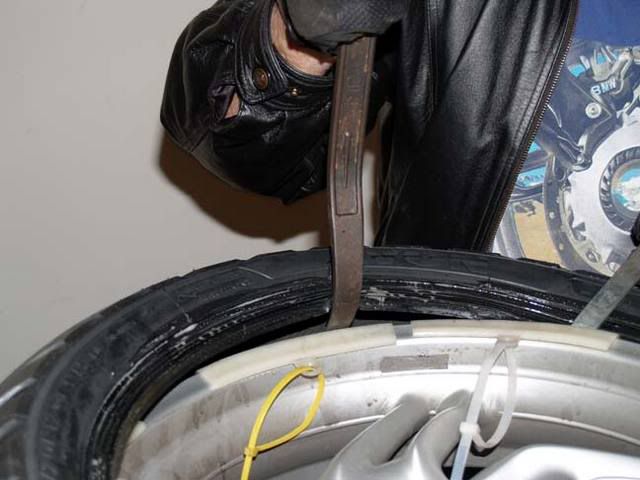
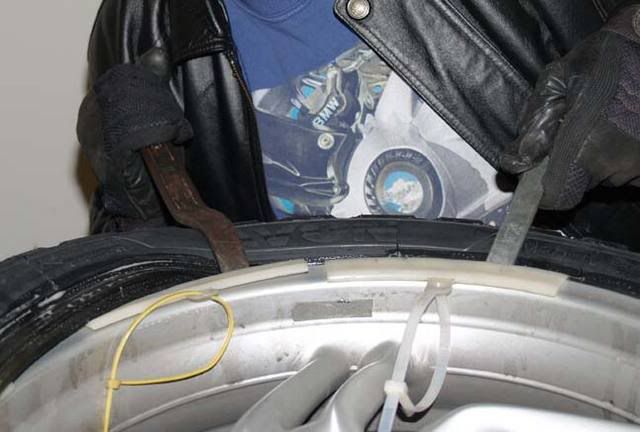
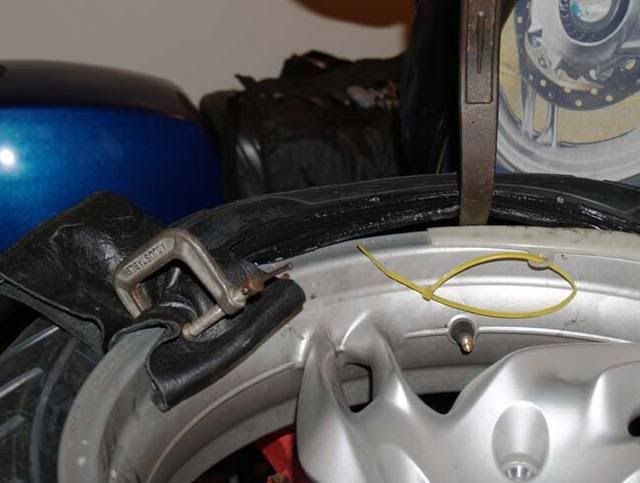
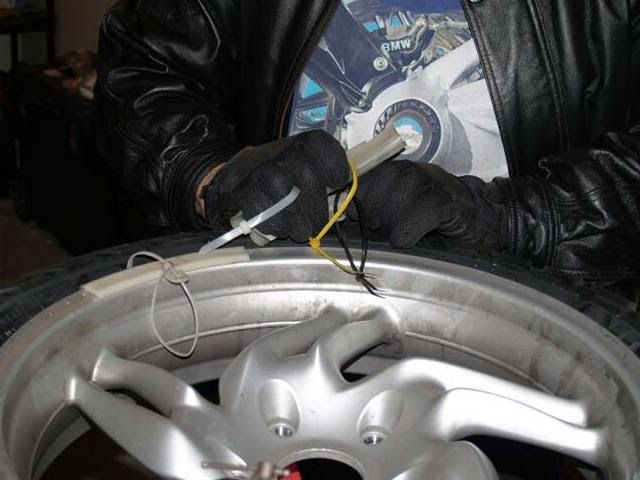
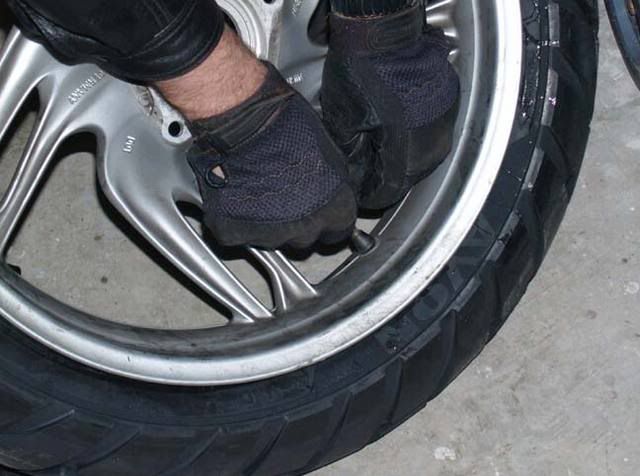

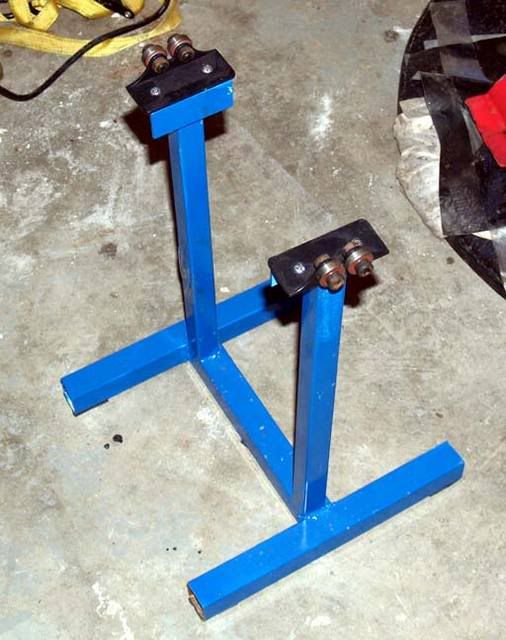
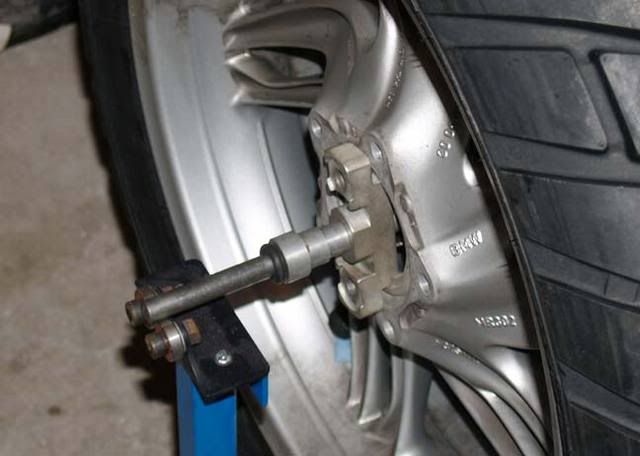
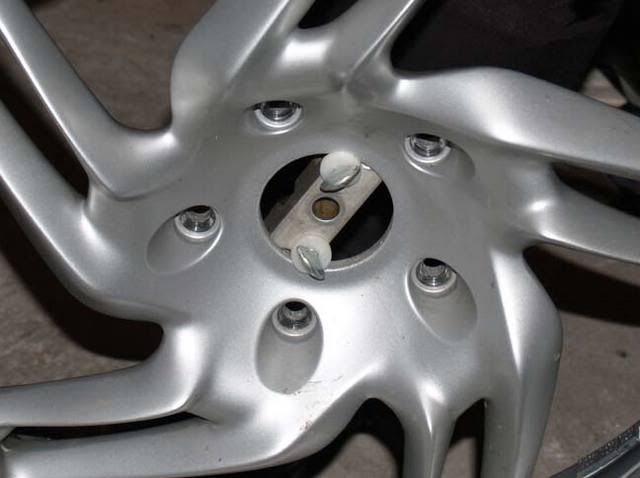
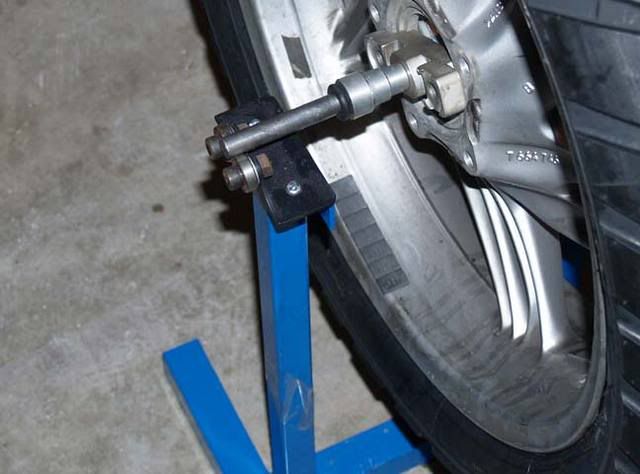
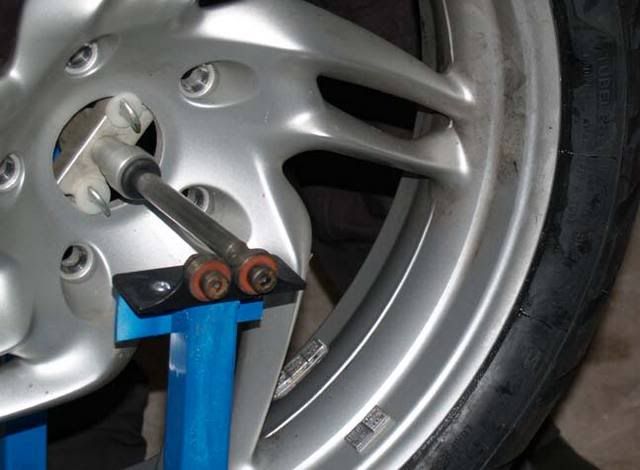


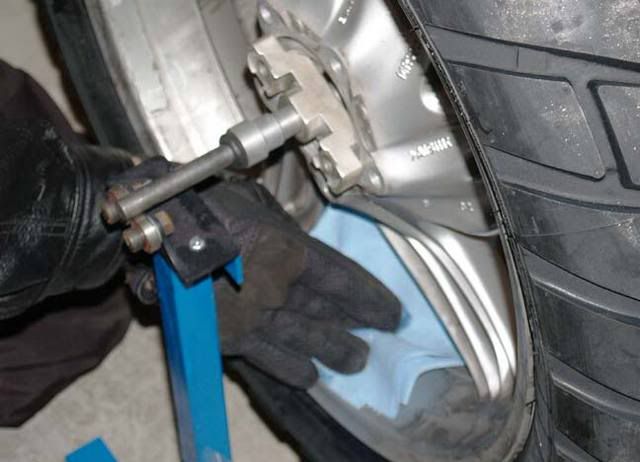
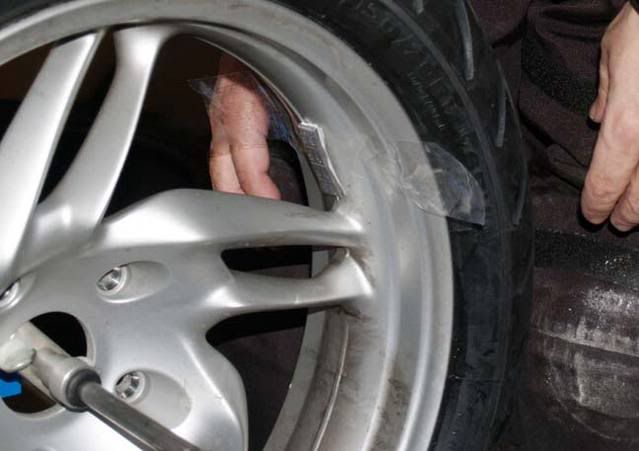
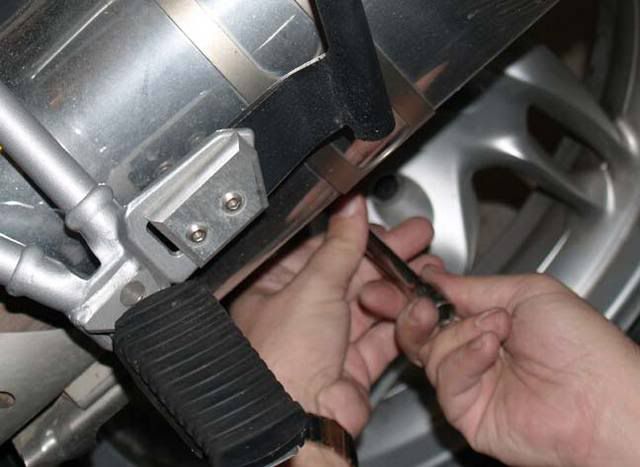
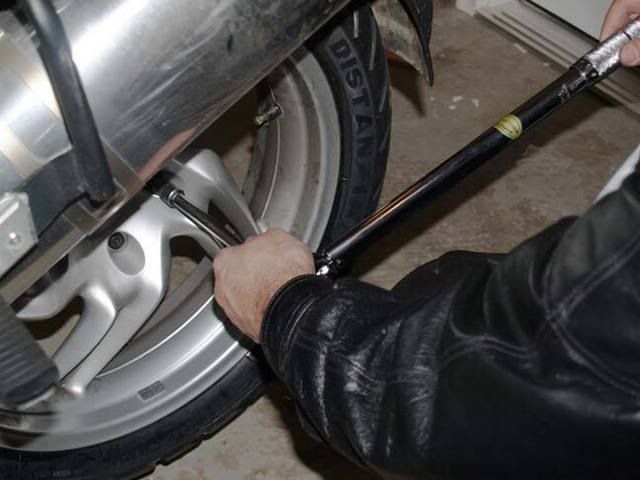
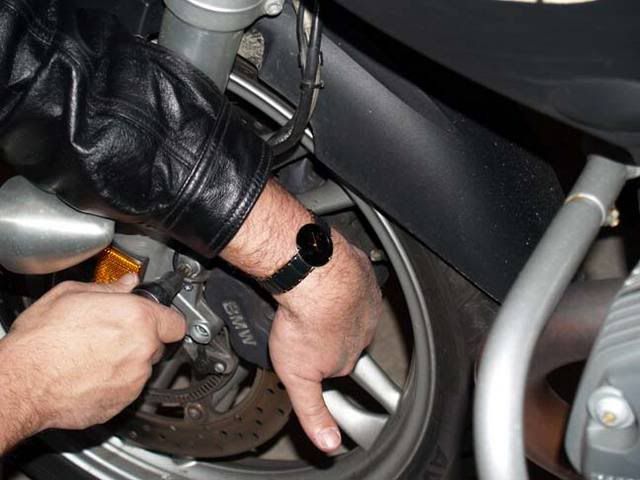
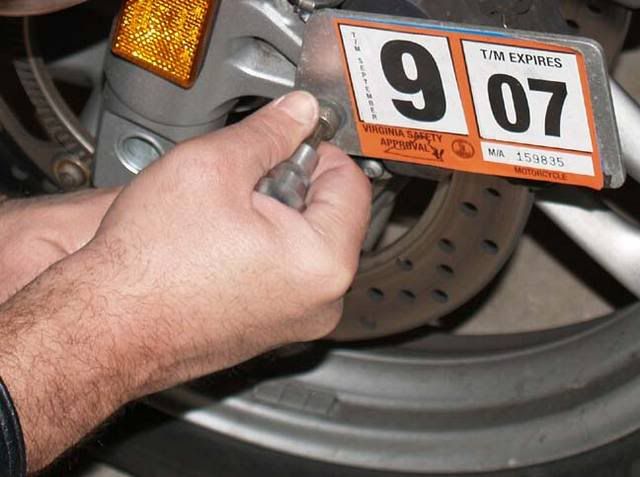

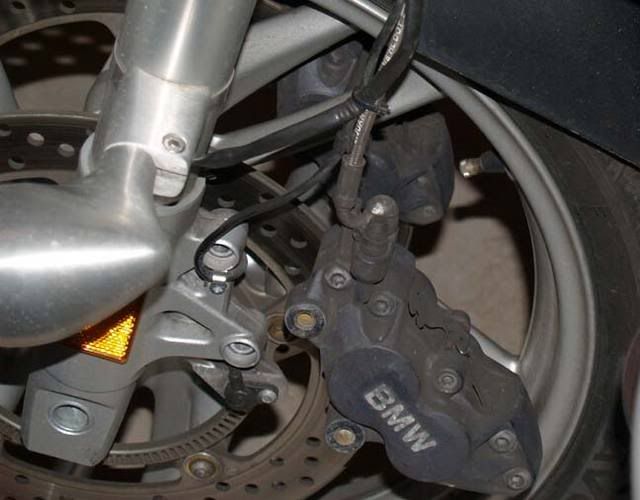
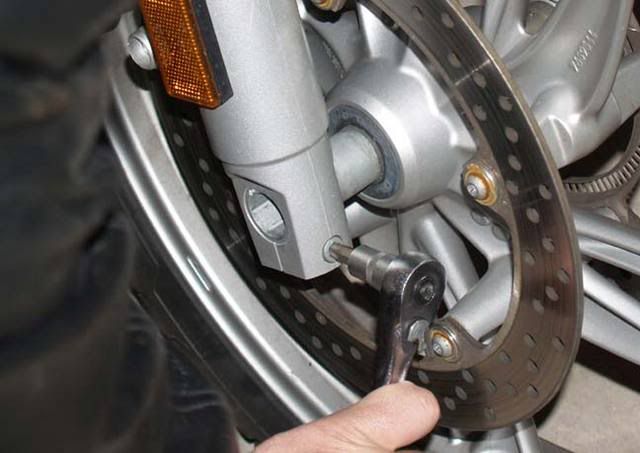
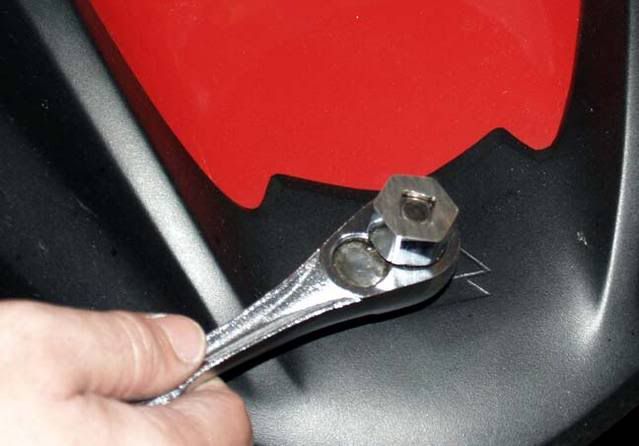
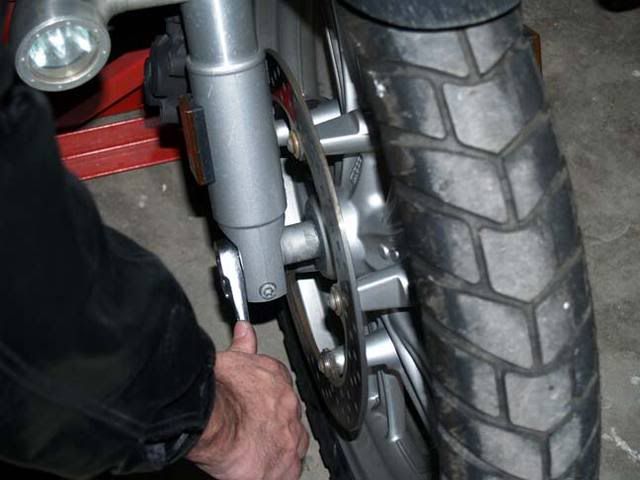
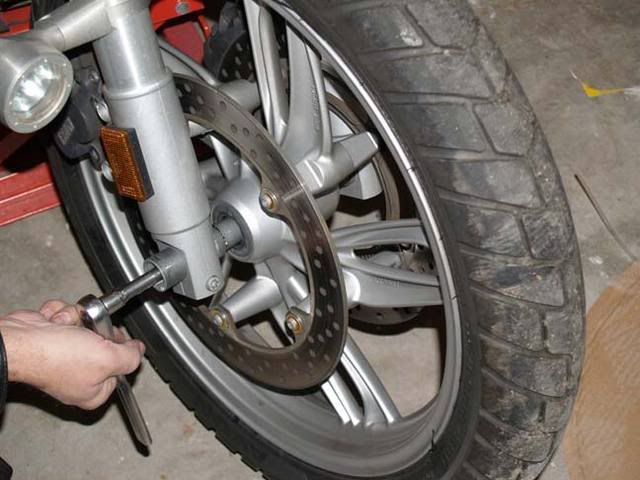

 )
)


